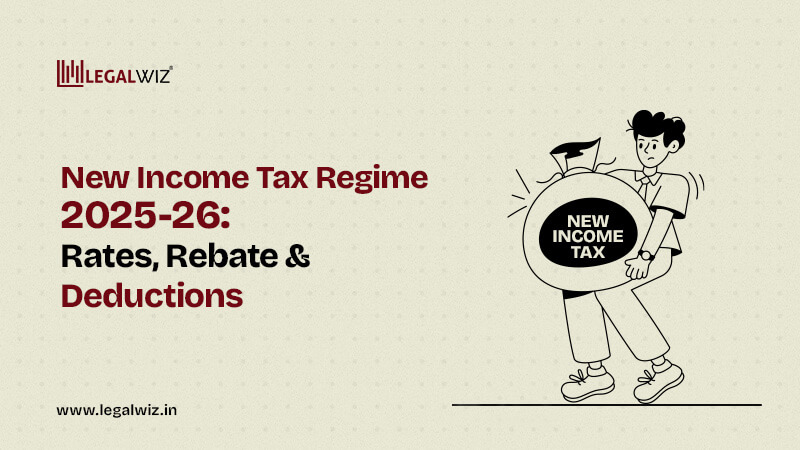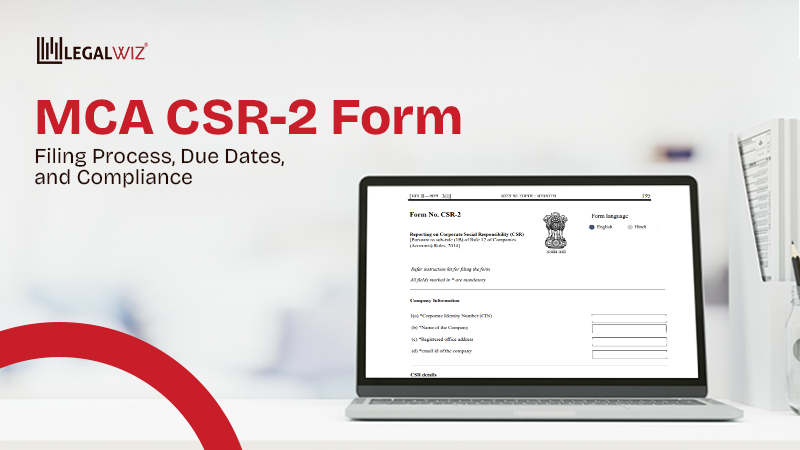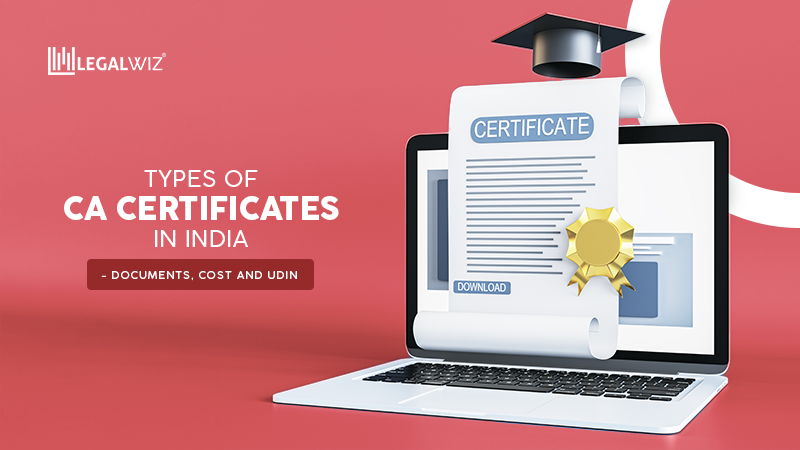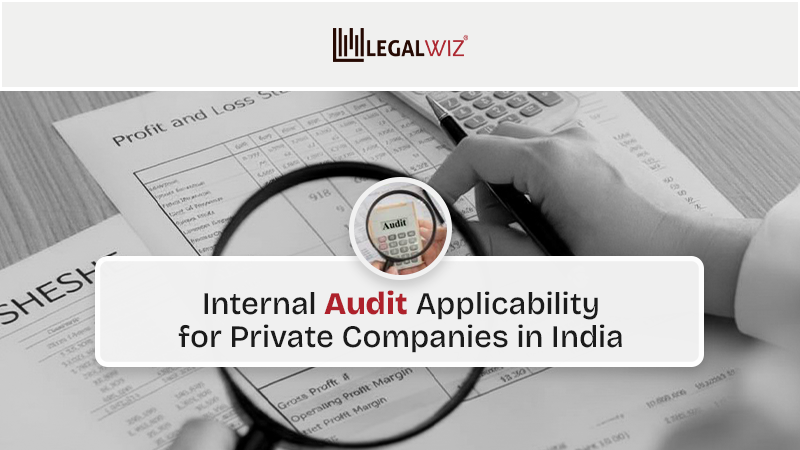New Income Tax Regime 2025-26: Rates, Rebate & Deductions
Zero tax on ₹12 lakh? Pinch yourself, it’s real—and it’s all thanks to the FY 2025-26 New Tax Regime.
If you’ve been dreading tax season, here’s a little relief for your wallet. The New Tax Regime for FY 2025‑26 has been tweaked, and let’s just say, it’s trying hard to be your new BFF. With a juicy rebate under Section 87A and lower slab rates, you might just walk away from the taxman’s office with a smile after filing (and maybe enough money left for that Goa trip you’ve been postponing since 2022).
Before you jump into the New Tax Regime, it helps to know the fundamentals of ITR for better clarity on the new changes.
Each rule of the Income Tax Return Filing can sound like a complicated IKEA manual, but don’t worry, we’ll break this one down into bite-sized, no-headache pieces. Ready? Let’s decode how much of your hard-earned money you actually get to keep this year.
1. Why This New Tax Regime is a Big Deal (and Not Just for CAs)
Okay, let’s be real, tax rules are usually as exciting as watching paint dry. But the New Tax Regime (u/s 115BAC) is kind of a big deal this year. Why?
- Fewer Deductions, Fewer Headaches: No more juggling 80C, 80D, HRA, ELSS, LIC, and whatnot just to trim your tax bill. The new regime keeps it simple, clean, and mostly fuss-free.
- Friendlier Slabs, Bigger Smiles: The government has bumped up the tax rebate, meaning if your taxable income is up to ₹12 lakh, you could end up paying ZERO tax. Yep, that’s as close as it gets to a “tax holiday” in India.
- Applies from FY 2025-26 (AY 2026-27): So, your salary slips this year aren’t just numbers—they decide whether you’re buying an extra pizza or reluctantly handing it over to the taxman.
In short: Think of the New Regime as a fast-food version of tax filing, no fancy sides (deductions), but quick, straightforward, and won’t leave you feeling robbed.
Confused between old and new tax regimes? Our blog on which regime is the best in 2025-26: Old or New? has all the answers.
Now that you know why this new regime is making waves, let’s talk numbers, the real meat of tax talk. Here’s how the latest slab rates stack up under FY 2025-26.
2. The Slab Rates of the New Regime
The Slab Rates of the New Tax Regime (FY 2025-26)
| Income Range (₹) | Tax Rate |
| Up to ₹4,00,000 | 0% |
| ₹4,00,001 – ₹8,00,000 | 5% |
| ₹8,00,001 – ₹12,00,000 | 10% |
| ₹12,00,001 – ₹16,00,000 | 15% |
| ₹16,00,001 – ₹20,00,000 | 20% |
| ₹20,00,001 – ₹24,00,000 | 25% |
| Above ₹24,00,000 | 30% |
Looks simple enough, right? But here’s where things get even sweeter: the government is throwing in a little extra treat with Section 87A, and it could mean zero tax for many of us.
| Quick Note: Gross Salary ≠ Taxable Income Before we jump into the Section 87A rebate, let’s clear up one common confusion. The rebate applies to your taxable income, not your full salary. Here’s the simple math: Start with your Annual Salary Example: ₹10,00,000 Subtract the Standard Deduction (₹75,000 for salaried individuals and pensioners) 10,00,000 – 75,000 = ₹9,25,000 (Taxable Income) This ₹9.25 lakh is what the taxman looks at to decide your rebate eligibility—not the ₹10 lakh on your payslip. |
3. Rebate Under Section 87A – Your Shortcut to Paying Zero Tax
Now that you’ve seen the slab rates in the new regime, here’s where things get interesting.
Even if your income lands in the 5% or 10% tax slab, you might still end up paying nothing at all, thanks to Section 87A.
Here’s how it works:
- If your taxable income (after the standard deduction of ₹75,000) is ₹12 lakh or less, you get a full tax rebate of up to ₹60,000.
- This rebate reduces your tax liability to zero—yep, no tax to pay, no TDS blues, nothing.
- Essentially, the government is saying: “Earn smart, keep it all, we won’t touch it.”
This rebate makes the New Tax Regime extra attractive for middle-income earners, ensuring that the lower tax rates we just saw in the slab table feel even more rewarding in practice.
This is just the tip of the iceberg— to understand better, it’s important to know what deductions and exemptions you can claim this tax season as a salaried individual.
4. Standard Deduction in New Regime – The Taxman’s Little Mercy Card
After the rebate magic of Section 87A, there’s another small win waiting for salaried folks and pensioners—the Standard Deduction.
Here’s the deal:
- Every salaried individual and pensioner gets a flat deduction of ₹75,000 from their taxable income under the New Tax Regime.
- No receipts, no paperwork, no begging your HR—this one’s automatic.
- Think of it as the government saying: “We’ll pretend this slice of your income never existed.”
When combined with the Section 87A rebate, this deduction often pushes your taxable income below ₹12 lakh, helping you legally score that zero-tax dream.
Even the taxman knows you deserve a break—this one’s on the house. But he won’t let it slide if you file the wrong ITR form. To claim the standard deduction, make sure you’re using the right form. If you’re unsure, check out our guide to decide which ITR form to choose, where we’ve explained each form in the simplest way possible.
5. Real-Life Example – How the New Tax Regime Gives Your ₹10 Lakh Income a Break
Numbers on paper are one thing, but let’s see how the New Tax Regime (FY 2025-26) actually plays out in real life.
Scenario:
You’re a salaried employee earning ₹10,00,000 a year under the New Regime.
Here’s how the math unfolds (and no, you don’t need a calculator headache for this):
Standard Deduction:
Straight off the bat, you get a ₹75,000 deduction just for being salaried (no receipts, no proof needed).
New taxable income = ₹10,00,000 – ₹75,000 = ₹9,25,000
Tax Slab Calculation:
- Up to ₹4,00,000 → 0% tax = ₹0
- ₹4,00,001 – ₹8,00,000 → 5% tax = ₹20,000
- ₹8,00,001 – ₹9,25,000 → 10% tax = ₹12,500
Total tax before rebate = ₹32,500
Rebate under Section 87A:
Since your taxable income is below ₹12 lakh, you get a rebate of ₹32,500 (up to ₹60,000 max).
Final Tax = ₹32,500 – ₹32,500 = ZERO
Quick Tax Comparison – Old vs New Regime (FY 2025-26)
| Income (₹) | Old Regime Tax (approx.) | New Regime Tax (approx.) |
| 7,00,000 | ₹23,400 (no deductions) ₹0 (with deductions) | ₹0 (Section 87A rebate) |
| 10,00,000 | ₹78,000 (with 80C + 80D) | ₹0 (Section 87A rebate) |
| 15,00,000 | ₹1,56,000 (with deductions) | ₹1,12,500 |
| 20,00,000 | ₹2,60,000 (with deductions) | ₹2,62,500 |
Takeaway: The New Regime is usually better for those with fewer investments/deductions, while the Old Regime may still win if you max out tax-saving options.
What This Means for You:
- You legally pay no tax on a ₹10 lakh salary under the New Regime.
- Your take-home pay gets a healthy boost.
- That trip you’ve been postponing since 2022? The taxman just funded it.
At ₹10 L, you don’t pay a paisa in tax; luck owes you a chai… or maybe a cappuccino.
6. Verdict – Old vs. New Regime: Which Side Are You On?
So, after all this math magic, the big question is—should you blindly jump to the New Tax Regime?
Not necessarily. Here’s the deal:
Old vs. New Tax Regime – Quick Comparison Table
| Criteria | Old Regime (FY 2025-26) | New Regime (FY 2025-26) |
| Basic Exemption Limit | ₹2.5 lakh (for individuals below 60) | ₹4 lakh |
| Slab Rates | 5% to 30% (higher rates kick in earlier) | 0% to 30% (lower tax rates overall) |
| Deductions & Exemptions | Allows 80C, 80D, HRA, home loan interest, LTA, and many more | Only ₹75,000 standard deduction for salaried/pensioners |
| Rebate (Sec 87A) | Available up to taxable income of ₹5 lakh | Available up to taxable income of ₹12 lakh (up to ₹60,000 rebate) |
| Tax Calculation | Complex—needs planning, proof of investments, and paperwork | Simplified—no proof needed, straight calculation on income |
| Best For | Taxpayers with high investments, insurance, or exemptions to claim | Taxpayers with no/lower deductions, or those who prefer hassle-free filing |
Pro Tip: Before filing, calculate your tax under both regimes (there are plenty of free calculators online). Then pick the one that keeps the most money in your pocket.
Because at the end of the day, whether it’s the Old Regime or New Regime, one thing never changes—the taxman gets his share, but you get to decide how big that slice is.
7. Why File Your Taxes with LegalWiz?
- Smart Savings: We compare Old vs. New Regime and help you choose the one that saves you the most.
- No Stress, No Paperwork: Our experts handle everything from start to finish.
- Clear Guidance: Simple, jargon-free advice you can actually understand.
- Error-Free Filing: Checked by professionals, reducing chances of notices or penalties.
With LegalWiz, filing your ITR is fast, accurate, and stress-free—just how it should be.
Get expert help and file your return today → Need to add the CTA box here
Conclusion – Pick Smart, Save Smarter
The New Tax Regime for FY 2025-26 (AY 2026-27) is clearly trying to win over taxpayers with simpler slabs, juicy rebates, and zero-tax perks up to ₹12 lakh. But remember, the Old Regime still has its charm if you’re someone who loves maxing out deductions under 80C, HRA, 80D, and more.
At the end of the day, there’s no “one-size-fits-all” while filing ITR. Run the numbers under both regimes before you file, because what saves your colleague money might not save you a rupee. And if it still feels like tax season is a maze, don’t sweat it. The right CA (hello, Team LegalWiz) can help you choose smartly, save legally, and keep the taxman from taking that extra chai-paani.
Frequently Asked Questions
What are the new income tax slabs for FY 2025-26?
The New Regime has seven slabs starting at 0% tax up to ₹4 lakh, gradually moving to 30% tax above ₹24 lakh. This year’s highlight is the zero tax rebate up to ₹12 lakh, making it a win for many middle-income earners.
Do I need to claim deductions to get zero tax under the new regime?
Nope! Unlike the Old Regime, the New Regime doesn’t require you to invest in 80C or keep a folder full of bills. If your taxable income (after the ₹75,000 standard deduction) is ₹12 lakh or below, the Section 87A rebate wipes your tax bill clean—no paperwork needed.
Can I still claim HRA, 80C, or other deductions under the New Regime?
Mostly no. The New Regime is designed to be simple but “no-frills”—meaning you cannot claim popular deductions like HRA, 80C (investments), 80D (health insurance), etc. Only the standard deduction of ₹75,000 is allowed for salaried and pensioners.
Which regime is better: Old or New?
Well, it depends on your income and investments: If you have high tax-saving investments and exemptions, the Old Regime might still save you more. Also, if you don’t have many deductions, the New Regime’s lower rates and rebates will likely benefit you. So, use an online tax calculator to compare both before you file.
Is the New Tax Regime now the default option?
Yes, the New Regime is the default for FY 2025-26, meaning your employer will assume you’re opting for it unless you specifically choose the Old Regime while filing your return.
Can I switch between the Old and New Regimes every year?
Salaried individuals: Yes, you can choose a different regime each year while filing your ITR. Individuals with business income: You can switch once, but after that, your choice becomes fixed (unless you stop having business income).
Does the Section 87A rebate apply if my income is ₹12,10,000?
Unfortunately, no. Even ₹1 above the ₹12 lakh threshold disqualifies you from the rebate. In that case, you pay tax based on the applicable slab rates.

Sapna Mane
Sapna Mane is a skilled content writer at LegalWiz.in with years of cross-industry experience and a flair for turning legal, tax, and compliance chaos into clear, scroll-stopping content. She makes sense of India’s ever-changing rules—so you don’t have to Google everything twice.







